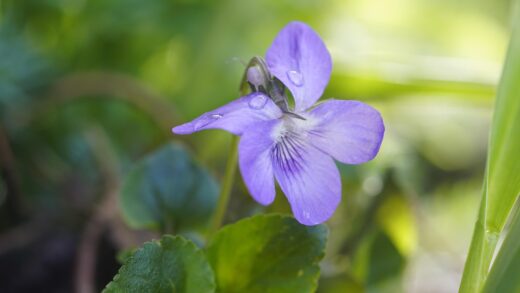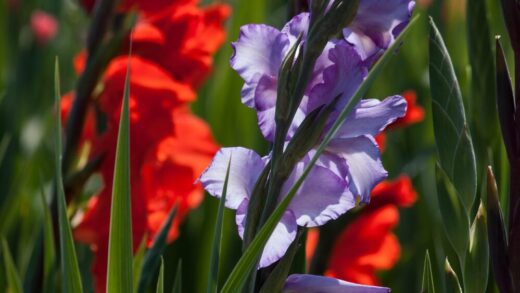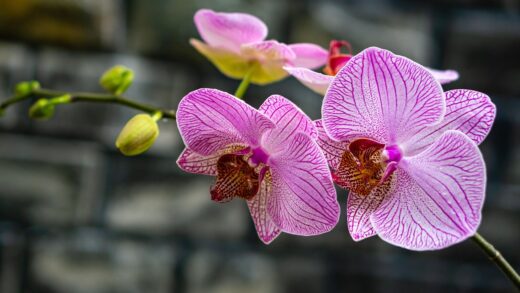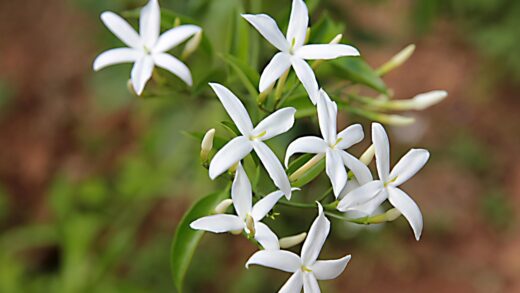Arum maculatum, with its robust nature and inherent toxicity, is remarkably resistant to many of the common pests and diseases that afflict other garden plants. Its chemical defenses, primarily calcium oxalate crystals, deter most grazing animals such as deer and rabbits, making it a reliable choice for gardens where these animals are a problem. However, despite its resilience, it is not entirely immune to issues. Certain pests, particularly slugs and snails, can be problematic, and under suboptimal growing conditions, the plant can become susceptible to fungal diseases like root rot. A proactive approach focused on providing the right cultural conditions is the most effective strategy for preventing these problems and ensuring the plant remains healthy.
The foundation of disease and pest prevention for cuckoo-pint lies in replicating its preferred natural habitat. This means providing a shady location with moist, but crucially, well-drained soil that is rich in organic matter. A plant that is stressed by incorrect growing conditions, such as excessive direct sun, waterlogged soil, or nutrient-poor soil, will have a weakened immune system and will be far more vulnerable to attack from pests and pathogens. Therefore, getting the site and soil right from the very beginning is the single most important preventative measure.
Good garden hygiene also plays a significant role in minimizing the risk of diseases. This includes regularly removing any dead or decaying plant debris from around the base of the plants, as this material can harbor fungal spores and provide a hiding place for pests like slugs and snails. Ensuring adequate air circulation by not overcrowding plants can also help to reduce the incidence of fungal leaf diseases, as it allows the foliage to dry more quickly after rain or watering.
When problems do arise, it is generally best to opt for organic and cultural control methods rather than immediately resorting to chemical pesticides or fungicides. For a plant as naturally tough as Arum maculatum, these interventions are rarely necessary and can disrupt the beneficial ecosystem of the garden, harming pollinators and natural predators. A vigilant gardener who regularly inspects their plants can usually catch any issues early and manage them with simple, non-invasive techniques.
Common pests and their management
By far the most significant pests for Arum maculatum are slugs and snails. These mollusks are particularly attracted to the tender new leaves as they emerge in the spring, and a severe infestation can shred the foliage, weakening the plant and ruining its ornamental appearance. Their feeding activity creates ragged holes in the leaves and tell-tale slime trails are often visible on and around the plant. Damage is usually most severe during damp and mild weather conditions.
More articles on this topic
Managing slugs and snails effectively often requires a combination of methods. Encouraging natural predators is a highly effective long-term strategy; creating a garden environment that is hospitable to birds, frogs, toads, and hedgehogs will help to keep slug and snail populations in check. Physical barriers can also be employed, such as surrounding the plants with a ring of crushed eggshells, horticultural grit, or copper tape, which slugs and snails are reluctant to cross.
Manual removal is another effective, albeit labor-intensive, method. Going out into the garden on damp evenings with a torch and hand-picking the pests off the plants can significantly reduce their numbers. Beer traps, which consist of a container sunk into the soil and filled with beer, can also be used to attract and drown slugs and snails. For more persistent problems, organic slug pellets based on ferric phosphate can be used, as these are less harmful to wildlife and pets than traditional metaldehyde-based pellets.
Other pests, such as aphids, are only occasionally a problem for Arum maculatum. Aphids may sometimes colonize the new growth or the flower spathe, but they rarely cause significant damage to a healthy, established plant. If aphid numbers become high, they can usually be controlled by simply spraying them off with a jet of water from a hose or by encouraging beneficial insects like ladybirds and lacewings, which are natural predators of aphids.
Fungal diseases and prevention
The most serious disease threat to Arum maculatum is tuber rot, a fungal or bacterial infection that affects the underground storage organ. This disease is almost invariably caused by one single factor: waterlogged soil. When the soil is poorly drained and remains saturated for extended periods, it creates an anaerobic environment that is perfect for the proliferation of rot-causing pathogens. The tuber becomes soft, mushy, and foul-smelling, and the plant’s foliage will turn yellow, wilt, and ultimately die.
More articles on this topic
Prevention is the only effective cure for tuber rot, as once it has taken hold, the plant is usually impossible to save. The key to prevention is ensuring excellent drainage at the planting site. Before planting, amend heavy clay soils with plenty of organic matter and horticultural grit to improve their structure. Avoid planting in low-lying areas of the garden where water collects. For container-grown plants, use a high-quality, free-draining potting mix and ensure the pot has ample drainage holes.
Another preventative measure is to be meticulous with the watering schedule, especially during the plant’s summer dormancy. The tuber is particularly vulnerable to rot during its resting phase when it is not actively growing. It is essential to reduce watering significantly once the leaves have died back, allowing the soil to dry out between waterings. Overwatering during dormancy is one of the most common mistakes that leads to the demise of this plant.
Occasionally, the leaves of Arum maculatum may be affected by fungal leaf spots or rust. These diseases typically appear as discolored spots or powdery pustules on the foliage and are more common in humid conditions with poor air circulation. While aesthetically displeasing, they rarely cause serious harm to the plant. To manage these issues, remove and destroy any affected leaves as soon as they are noticed to prevent the spread of spores. Ensuring plants are not overcrowded will improve air movement and help to keep the foliage dry, making conditions less favorable for fungal growth.
Recognizing signs of distress
Being able to distinguish between the natural life cycle of Arum maculatum and genuine signs of distress is crucial for proper care. The yellowing and dying back of the leaves in early summer is a perfectly normal part of the plant’s transition into dormancy and should not be cause for alarm. This is a natural process and is not indicative of any disease or pest problem.
However, if the leaves turn yellow and wilt during the active growing season in spring, this is a clear sign that something is wrong. The first step in diagnosis is to check the soil moisture. If the soil is dry and crumbly, the plant is likely suffering from drought stress and needs a thorough watering. If the soil is soggy and saturated, the wilting is almost certainly due to overwatering and the onset of tuber rot. In this case, watering should be stopped immediately, and if the condition is not too advanced, improving drainage may help.
Physical damage to the leaves, such as ragged holes or chewed edges, is a clear indication of a pest problem, most likely slugs or snails. Inspect the plant carefully, especially on the undersides of the leaves and around the base, to confirm the presence of these pests. Slime trails are another definitive sign. Early detection and implementation of control measures will prevent the damage from becoming widespread.
A general lack of vigor, such as stunted growth, failure to flower, or producing only small leaves year after year, can also be a sign of distress. This is often linked to suboptimal growing conditions rather than a specific pest or disease. It may indicate that the soil is depleted of nutrients, the location is too sunny, or the soil is too compacted. Assessing the plant’s overall environment is key to diagnosing and rectifying these more chronic issues.
Integrated pest management strategies
An Integrated Pest Management (IPM) approach is the most sustainable and environmentally sound way to deal with pests and diseases affecting Arum maculatum. IPM focuses on prevention and uses a combination of cultural, biological, and physical controls, resorting to chemical treatments only as a last resort. This holistic strategy aims to create a balanced garden ecosystem where pest populations are kept at manageable levels rather than being completely eradicated.
The first line of defense in an IPM program is cultural control. This involves creating the healthiest possible growing environment for the plant. For cuckoo-pint, this means selecting a shady site with well-drained, organically rich soil. A healthy, vigorous plant is naturally more resistant to pests and diseases. Good garden sanitation, such as clearing away debris that can harbor problems, is also a key cultural practice.
Biological control is the next step, which involves using a pest’s natural enemies to control its population. For the main pests of cuckoo-pint, slugs and snails, this means making the garden a welcoming place for predators like birds, frogs, and hedgehogs. This can be achieved by providing sources of water, shelter, and avoiding the use of broad-spectrum pesticides that could harm these beneficial creatures. Microscopic nematodes, which are parasitic to slugs, can also be purchased and applied to the soil as a biological control.
Physical and mechanical controls are also important components of IPM. This includes actions like hand-picking slugs and snails, using barriers like copper tape, or setting traps. For diseases, the physical removal of infected leaves can prevent the problem from spreading. These methods directly target the pest or disease with minimal impact on the surrounding environment. By employing this integrated approach, you can manage any issues effectively while maintaining a healthy and resilient garden ecosystem.


















